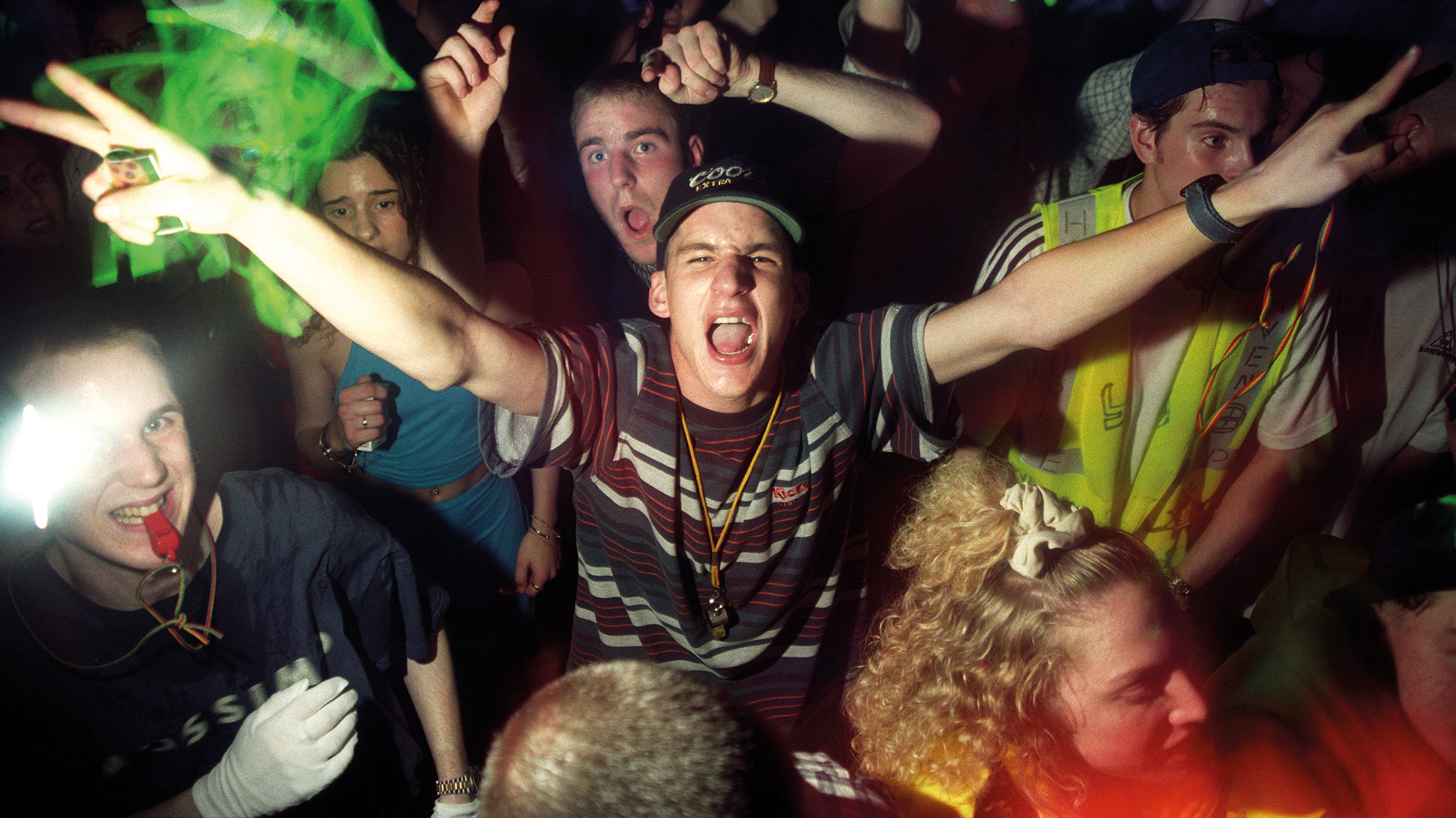The beginners guide to: hardcore
Springing from house and techno, this is a sound to be taken just as seriously. Hardcore: do you know the score?

We’ve covered some of the most popular rave-related genres already in this column – most notably acid house and jungle – but it’s time to shine the light on a crucial (and often overlooked) style which dominated European rave culture at one point. This is hardcore.
Hardcore sounds began to emerge around 1990, growing primarily out of techno but also to some extent from acid house. Unfortunately for the purposes of this column, it’s not a straightforward story of a single new sound emerging, but something a little more complicated, with various different strains of hardcore developing in different countries simultaneously.
It’s strange that hardcore sometimes doesn’t get the credit it deserves as a major element of electronic music history
As a very broad rule of thumb, hardcore represented producers and DJs cranking up the tempos, focusing on tougher, darker sounds with big, often distorted kick drums, and drawing on influences from other genres like industrial, Belgian new beat and EBM.
In the UK, breakbeat-driven hardcore such as 2 Bad Mice’s Bombscare paired techno and house sounds back to a functional, almost minimalist perfection. From the USA, a slightly more expansive take on the sound was typified by tracks like Joey Beltram’s Mentasm, with its aggressive Roland Alpha Juno ‘hoover’ bass sound which went on to be a staple of hardcore.
Across mainland Europe – notably Belgium, the Netherlands and Germany – hardcore mutated even more quickly. Before long, it splintered into dozens of sub-genres and rival sounds, spawning and cross-pollinating with scenes like gabber, hardstyle, hardtechno, free tekno and various trance styles.
If it’s hard to pin down a strict definition of hardcore it’s precisely because of this fluidity and hyperactive mutation which has been occurring since day one. Before talking about hardcore, you almost need to ask what kind of hardcore (and that’s not even to mention the fact that the term has also been widely used to refer to hardcore punk since the early ’80s).
Music writer Simon Reynolds argues that the breakbeat-heavy UK take on hardcore – or as Reynolds sometimes puts it, ardkore – has been a common thread running through dance music over the last 30 years. This ‘hardcore continuum’ theory posits that the ‘frenetic pitch’, tempo, bass impact and ‘ruff and tuff uproar’ of hardcore all run throughout countless genres since the early ’90s.
Want all the hottest music and gear news, reviews, deals, features and more, direct to your inbox? Sign up here.
That’s most obvious in the case of early mutations like jungle, which grew directly out of hardcore club nights like Fabio and Grooverider’s RAGE, where a young Goldie fell in love with hardcore and developed his early sound. Reynolds and other hardcore continuum believers trace this thread through jungle and onward into drum & bass, speed garage, two-step UK garage, dubstep, grime, funky house and drill.
Given the strength of that theory, it’s strange that hardcore sometimes doesn’t get the credit it deserves as a major element of electronic music history. The most likely explanation is that its splintered, fragmented nature has meant it never quite coalesced into the strong national and international scenes enjoyed by more homogenised genres like house and techno.
Nevertheless, it’s only fair to acknowledge that hardcore’s influence on other genres is huge, and we’ll explore its impact further in future columns on some of the many sub-genres and scenes we’ve mentioned in our beginner's guides.
Three of the many takes on hardcore
Rotterdam Termination Source – Poing (1992)
Representing the brash, almost silly end of the hardcore scale, Poing was an unlikely number two hit in the Dutch pop charts, making the top 30 in the UK. Based around little more than 909 drums and a fairly irritating rubbery twang sample, Poing really shouldn’t work as well as it does.
The secret lies in the intricacy of the drum programming, which producer Maurice Steenbergen claims was the result of six months’ work. The distorted 909 kick morphs into a square wave packed with harmonics, one of the definitive sounds of gabber.
Rufige Kru – Terminator (1992)
Right on the cusp of breakbeat hardcore morphing into early jungle, Goldie’s Terminator exemplifies the technological experimentalism at the heart of most hardcore, using the Eventide H3000 to stretch and pitch shift samples. Looking back, it’s a sign that hardcore was a fertile breeding ground for new sounds from the very beginning.
DJ Hixxy & MC Sharkey – Toytown (1995)
The track which kicked off the very first Bonkers mix album, a series that ran for over a decade and helped define happy hardcore. Toytown follows on from the toytown techno craze which swept UK rave music a few years earlier (think The Prodigy’s Charly and Urban Hype’s A Trip to Trumpton), employing sing-song vocals but ramping up the tempo to keep up with the ever-increasing tempo of hardcore’s speedrush.


Future Music is the number one magazine for today's producers. Packed with technique and technology we'll help you make great new music. All-access artist interviews, in-depth gear reviews, essential production tutorials and much more. Every marvellous monthly edition features reliable reviews of the latest and greatest hardware and software technology and techniques, unparalleled advice, in-depth interviews, sensational free samples and so much more to improve the experience and outcome of your music-making.
